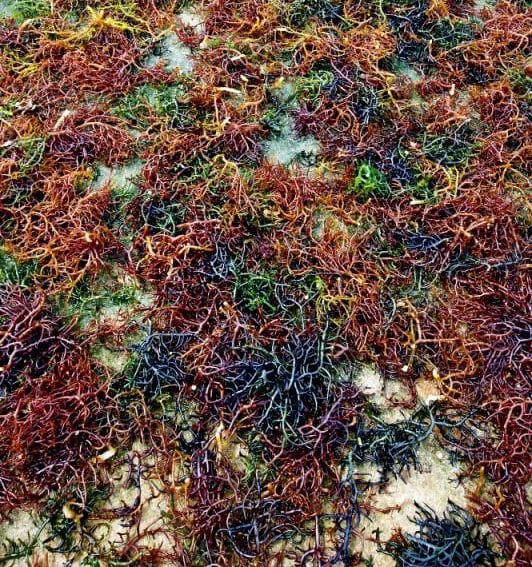By: Flower Msuya
Send to a friend
The details you provide on this page will not be used to send unsolicited email, and will not be sold to a 3rd party. See privacy policy.
A ‘cluster research’ model that worked for seaweed growers in Zanzibar should be widely adopted, says Flower Msuya.
The results of scientific studies are of little use to farmers unless they stem from applied research that can enhance the work they do to make a living. Such research could, for example, lead to innovative methods that help seaweed farmers earn more by producing high-quality crops or adding value to their seaweed by processing it rather than selling it raw.
But research results often fail to reach the people who can benefit from them. To avoid this, the Zanzibar Seaweed Cluster Initiative (ZaSCI) has been practising cluster-based research, an approach that has improved the applicability of research over the past ten years with interesting results.
Direct line to research
Two features differentiate cluster-based research from other forms. One is that it tackles challenges brought to scientists by a particular community, such as farmers. The other is that the research findings are given back to this group as direct feedback, which they then use to improve their day-to-day activities. ZaSCI is a good, current example of how cluster research programmes can link farmers directly with research institutions.
“Because of the initiative, farmers are now communicating with each other through mobile phones to discuss challenges and day-to-day needs that they can then take to research institutions for answers.”
Flower Msuya
Two types of seaweed are farmed on the Tanzanian island of Zanzibar: cottonii and spinosum. Cottonii is in higher demand because it has more applications in industrial processes than spinosum (for example in food and cosmetics manufacturing), and so at 50 US cents per kilogram, its price is double that of the other seaweed. But cottonii has failed to thrive in recent years because of the impact of climate change: increased surface seawater temperatures and diseases have kept it from growing at all in many areas, and have cut its production in the few places where it still grows.
Farmers were troubled by the failure of this higher-value seaweed to grow, and brought the issue to ZaSCI meetings. Researchers listened to their concerns and focused on developing innovative methods to both produce the higher-valued seaweed and add value to the lower-priced seaweed.
They developed bamboo rafts, floating lines and recently a novel method of using tubular nets to do this. These methods can be used in water that is one to three metres deep as opposed to water of a few centimetres in depth, where seaweed is currently farmed. Conditions such as temperature and salinity are more stable in deeper waters, and so they favour better growth: more seaweed is produced per unit area, and die-offs are minimised.
Over the past ten years, ZaSCI research has enabled farmers to farm more of the higher-valued seaweed and produce a number of value-added products — such as foods including juice, jam and cake, and powder used to make products or against infections — that sell at a much higher price than raw seaweed. A good example is seaweed powder, which sells at US$6 per kilogram compared with 25 US cents per kilogram of unprocessed spinosum.
And the benefits go beyond the direct economic impact of research: because of the initiative, farmers are now communicating with each other through mobile phones to discuss challenges and day-to-day needs that they can then take to research institutions for answers.
Interactive links
ZaSCI operates using a ‘triple helix’ model that promotes interactive relationships between universities, industry and government. The presence of the government is important but not sufficient: policy issues are addressed by soliciting opinion from a variety of people, and assessed alongside views from government representatives.
In practice, this means ZaSCI links farmers (60 per cent of whom are women) with research institutions and government departments responsible for seaweed farming. It also links farmers or processors with each other as well as with exporters.
All are members of ZaSCI — membership is voluntary and open to anyone who is involved in one way or another with seaweed farming. It gives farmers, sellers, exporters, researchers, government officials and others a useful platform built on trust where they can meet and discuss issues of concern. Before ZaSCI started, farmers could only meet exporters when selling to a merchant in the village or if the traders made special visits to the farms.For example, this structure helped modify Zanzibar’s fisheries policy so it protects seaweed farmers against other users of the coastal farming sites and exporters of seaweed. Some fishermen might steal farming materials such as ropes, or ships that transport goods might destroy farms when passing through. The presence of exporters as well as government officers in ZaSCI made it easier to add to or edit the policy — ensuring that the price of seaweed is not lowered to the point where it threatens farmers’ livelihoods.
Africa needs more initiatives that run on this cluster-based research model. Its value comes not only from it being challenge-driven, but also from its bottom-up setup that gives farmers the power to work with universities without fearing the knowledge gap. More countries will apply cluster initiatives if we spread the word and showcase successful examples across the continent.
Flower E. Msuya is senior researcher at the Institute of Marine Sciences of the University of Dar es Salaam, Tanzania. She is the founder and facilitator of the Zanzibar Seaweed Cluster Initiative, and her work has focused on helping female seaweed farmers improve their livelihood. She can be contacted at [email protected]














